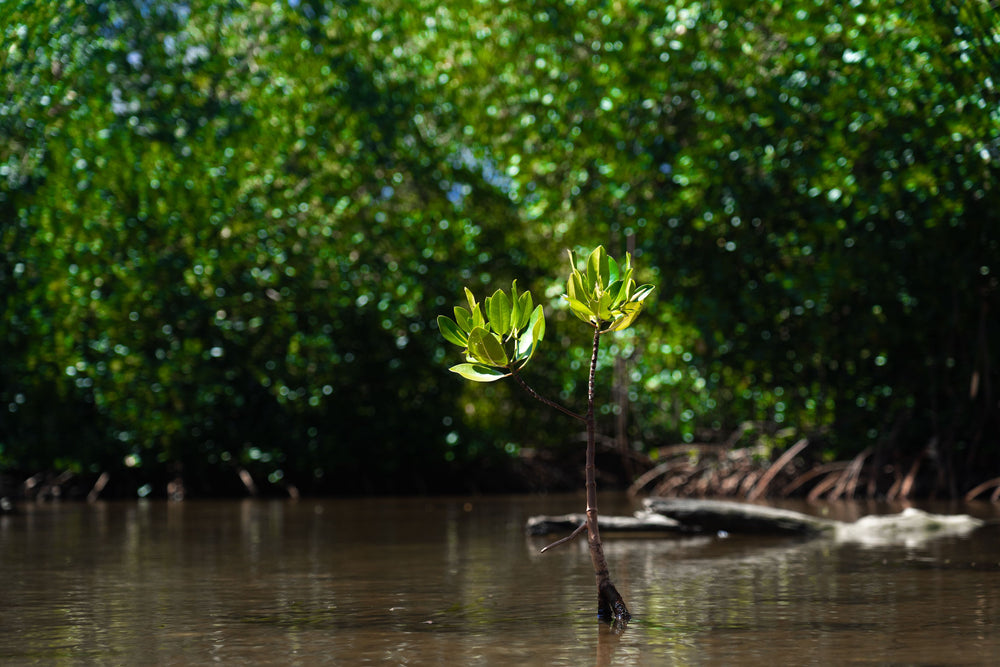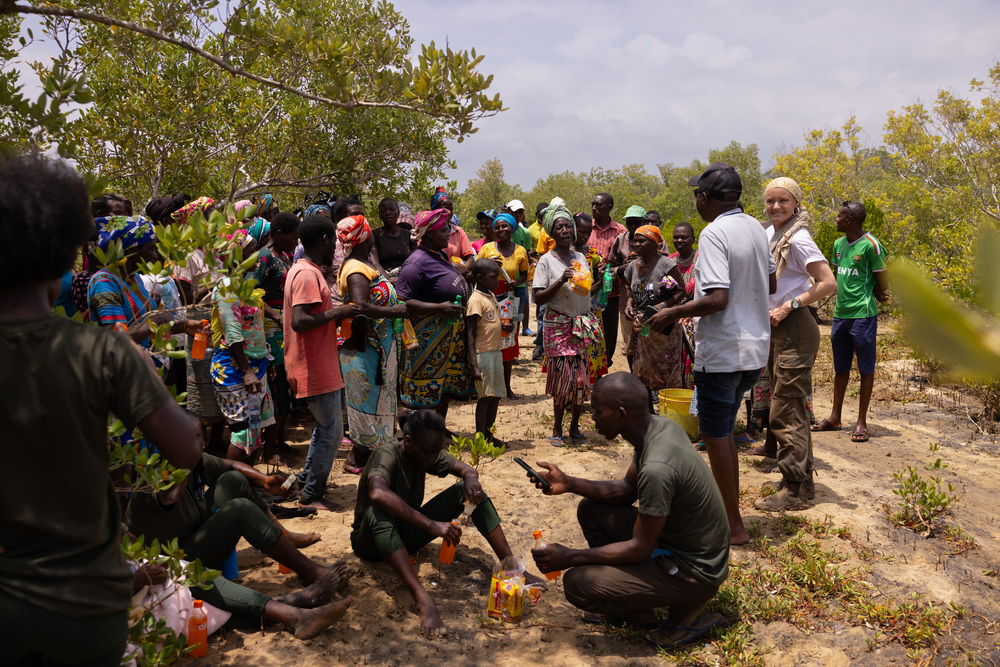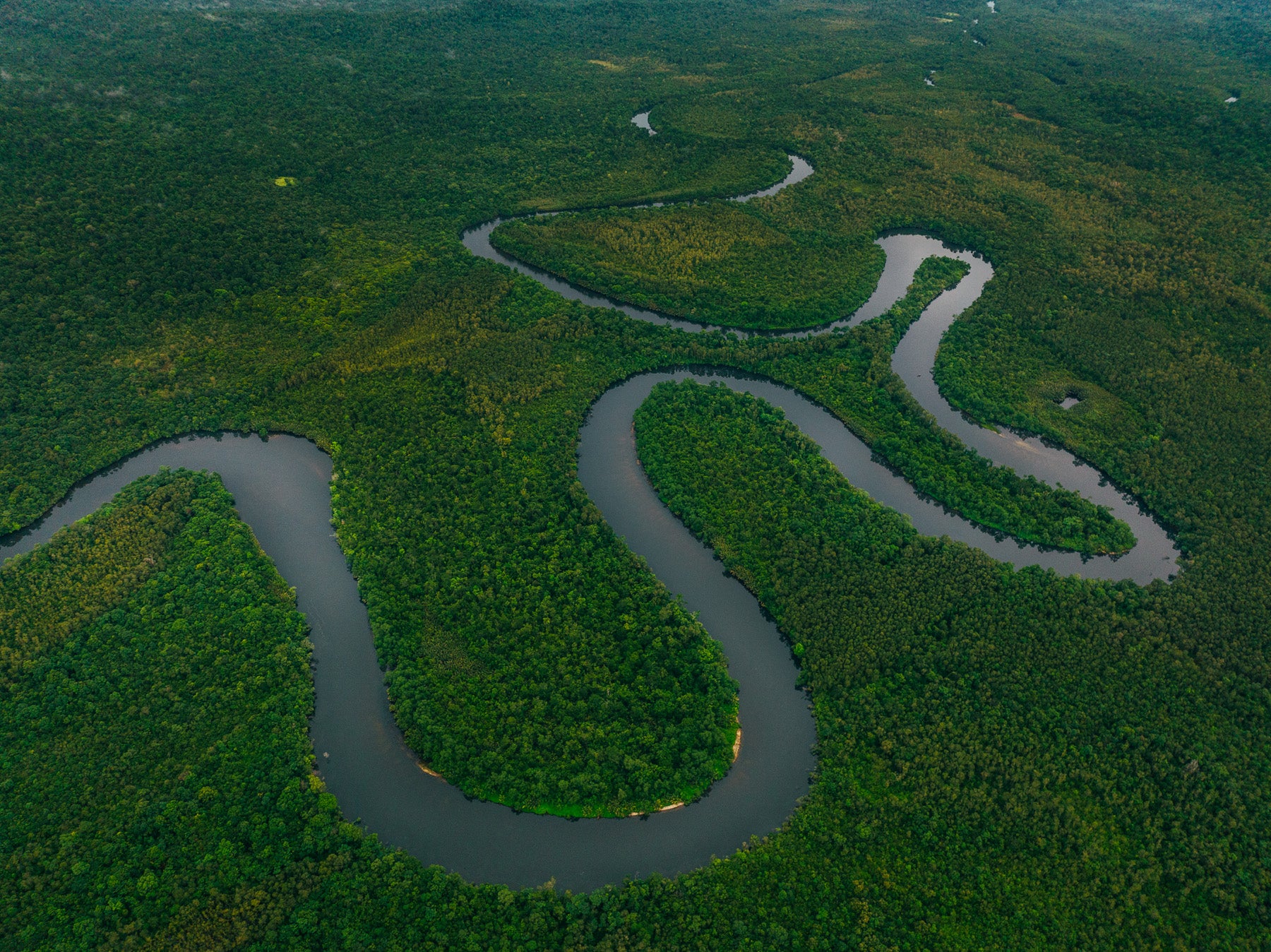Welcome to your Seatrees project!
Thanks for partnering with Seatrees to plant and grow mangrove trees in Marereni, Kenya!
We’ve created this doc to help you share the impact you’re having and inspire your community to follow in your footsteps. Think of this doc as a detailed FAQ - a way to guide the conversation. For larger partners, we're happy to explore bespoke ideas. We use our social channels (mainly Instagram) to promote our brand partners and newsletter, which is featured on our website, to highlight specific things our brand partners are doing that align with our mission and impact. Follow us: @sea.trees
Scroll to the bottom of your dashboard to access all the media assets provided to you for this project.

What’s our mission/vision?
On World Ocean Day, June 8, 2024, we announced our second major milestone of 4 million Seatrees planted + protected.
We're already working hard to find quality new projects where we can work together to plant the next Million Seatrees. Longer-term, our goal is to support 100 blue carbon projects in threatened coastal ecosystems by 2030, in turn becoming a global leader in developing blue carbon projects.
We believe the ocean has superpowers, and we can work with it to reverse climate change. But there's no time to waste. The global scientific consensus is clear that we have the next 10 years to reduce our collective carbon footprint to avoid passing a catastrophic climate tipping point.
Thousands of people and hundreds of brands have joined us on our mission to take action on climate change by regenerating coastal ecosystems. We’re excited to work with YOU to enable and enhance the ocean’s superpowers

Superpowers?
Yep, 90% of all carbon in the global carbon cycle is stored in the ocean. This is where it should be sequestered to reverse climate change.
Mangrove forests “suck” aka sequester, 5-10 times more CO2 out of the atmosphere per hectare than tropical rainforests. Much of that carbon is stored in the soil and sediment that make up a mangrove ecosystem.
Globally, kelp forests sequester as much CO2 as mangrove forests. 10% of kelp breaks off and sinks into the deep ocean - sequestering the CO2 it contains. The conservation of these ecosystems is critical to solving climate change and will protect the habitats of over 700 species of algae, invertebrates, and fish.
Known as the “rainforests of the sea,” coral reefs are the largest living structures on earth and support 25% of marine life. The conservation of these ecosystems is vital to coastal protection, scientific research, medication, fishing, eco-tourism, and more.
We’ll be planting your mangrove Seatrees in the Marereni, Kenya.
The Marereni project restores and protects 640 hectares of highly degraded mangrove forest within Kilifi County in Kenya. With the help of project partners COBEC (Community Based Environmental Conservation) and the local community, Seatrees will support the planting of 790,000 mangrove trees at our new project site in Kenya.
COBEC works with local villages to strategically replant mangroves in deforested areas. These communities are educated about the environmental and economic importance of the ecosystems and are employed to grow seedlings, collect mangrove propagules, plant mangroves, and monitor the growth of the trees.
Over the last several years, the mangrove forests within the Marereni region have been destroyed by land conversion, poaching, and Illegal logging. This degradation has led to loss of biodiversity, increased coastal erosion, loss of sea grasses and coral reefs, and the degradation of critical habitats for many important fish species, baboons, monkeys, turtles, and flamingos. The regeneration of these mangrove forests will reestablish critical habitats for several species and ensure they thrive for many years to come.
Every mangrove tree planted:
- Helps to create meaningful employment for more than 200 people
- Provides resources for local education
- Protects local villages from storm surges and sea-level rise
- Serves as critical nursery grounds for fish and shellfish, and increases local marine productivity
- Has the potential to sequester approximately 300kg of carbon dioxide over the 25 year life of the tree
To learn more, please visit the project page on our website here.
How is my “donation” spent?
Most of the money we receive for a specific project goes toward that project. This includes the restoration itself, as well as assessments/auditing of the project, site visits and regular meetings with the project managers, developing content and stories, and updating our website with progress updates.
We hold a portion of the donation to invest in new and start-up blue carbon and research projects that meet our assessment criteria.
Like all non-profits, we also use a portion to fund the operations of our organization. As a registered non-profit, our financials are publicly available - and approximately 15-20% of our income goes towards operational expenses.a
About Seatrees
Seatrees is a nonprofit organization that restores and protects coastal ecosystems around the world to reverse climate change, enhance biodiversity, and support local communities. We use a science-based approach to regenerate coral reefs, kelp forests, mangrove forests, seagrass meadows, and coastal watersheds. Our projects support local community restoration efforts and provide tangible ways for individuals and brands to create a more resilient planet for future generations.

Why Mangrove Forests?
Mangrove forests are one of the world’s most under appreciated and underrated ecosystems. Located along tropical coastlines, per hectare mangroves are among the most carbon-rich forests in the world - in fact, despite covering only 0.1% of the planet's surface, research shows that 14% of all coastal carbon sequestration is thanks to mangrove forests.
Key Stats:
- Each mangrove tree planted sequesters approximately 680lbs (380kg) of CO2 over its lifetime
- Approximately 30-50% of mangroves have been lost globally
- Mangroves provide $65 billion In flood defense globally
- Mangrove forests provide at least $1.6 trillion each year in ecosystem services

How do you ensure the impact is happening?
We have a thorough vetting process for every new project we consider. We support a limited number of projects that meet our criteria and can prove that ‘SeaTrees’ are not only being planted, but that they are being protected in the longer term.
The process we go through is underpinned by science and many years of experience managing large-scale restoration and carbon sequestration projects. It’s a long process built on these seven SeaTrees questions:
- Is this project connected to the ocean?
- Who's the planting partner, and how credible are they?
- Is it a region that people are interested in, and how often can we get there?
- Does this place have global/political issues? Any other red flags?
- How does this project align with the UN SDG's? What social impact does this have?
- Do the economics of this project stack up?
- Is this a scalable solution?
We visit all of our projects on an annual basis (more often if we can), and we require our project partners to provide regular updates.
Please share some visuals with us!
We’ll use relevant content from your website and social channels, but if you have any specific please let us know and we’ll determine whether it fits with our brand.
Do share your logo! We’ll display it proudly on our Brand Partners page.
Media Assets







